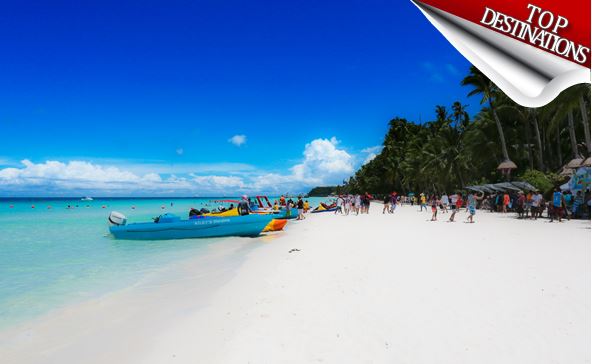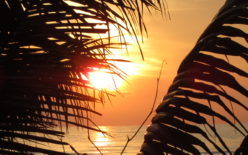
Update: Boracay reopened on October 26, 2018, but some venues remain closed, tourism numbers have been limited and infrastructure work is ongoing. Details here.
There’s an old saying that birds don’t [defecate] in their own nests. Having recently allowed pigeons to take up residence on my balcony, I know that that’s a crock of ….
Not that we humans have a moral advantage here. We’re notorious for messing up our own patch, from our own backyards to our entire planet. But what are the consequences of trying to reverse that process?
Boracay, the once-pristine Philippines resort island, is finding out.
On the official Philippines Tourism website, the description reads: “There is an undeniable easy atmosphere in Boracay where walking barefoot than shod is the rule rather than the exception. White Beach is so, soooo fine, it feels like treading on miles of baby powder! No wonder, even swinging discos have the beach for a floor, giving dance a new twist.”
The reality is that Boracay was closed to tourists in late April 2018, to give authorities the opportunity to clean it up. At the time, President Rodrigo Duterte cited sewage problems, noting in February in his typically frank way: “You go into the water, it’s smelly. Smells of what? Sh*t.”
Environment Secretary Roy Cimatu said at the time of announcing the six-month closure: “We will be able to open Boracay again and take pride in bringing back the island to its former glory. Boracay island will not be seen again as a cesspool.”
At the time of writing, Duterte has announced a compensation package for islanders to encourage them to return to farming. He said he will not support a casino on the island when it reopens to tourists (although he added that he might allow a floating casino).
“Why will I allow a casino to be built there? What will Filipinos gain from that? I will issue a proclamation that all the land is agricultural.”
So, what will become of Boracay once it reopens to visitors?
When I visited the island about 10 years ago (and wrote about it for an Australian newspaper), it was already showing some signs of strain, of growing too big too quickly.
It was impossible not to see the gap between the poor local people and the residents of the increasingly-more-posh resorts spread along the long, white beach. I noted my concern that children were lining the road selling petrol to passing vehicles out of plastic soft-drink bottles.
The Philippines government should be praised for taking action in cleaning up the island, although questions remain about how it was able to get to that point in the first place.
I just hope they fix it up properly for the benefit of the local people first, and the tourists second.
And that other authorities worldwide start to understand that too much tourism, or too much development in general (especially at a breakneck pace) can be a very, very bad thing.
